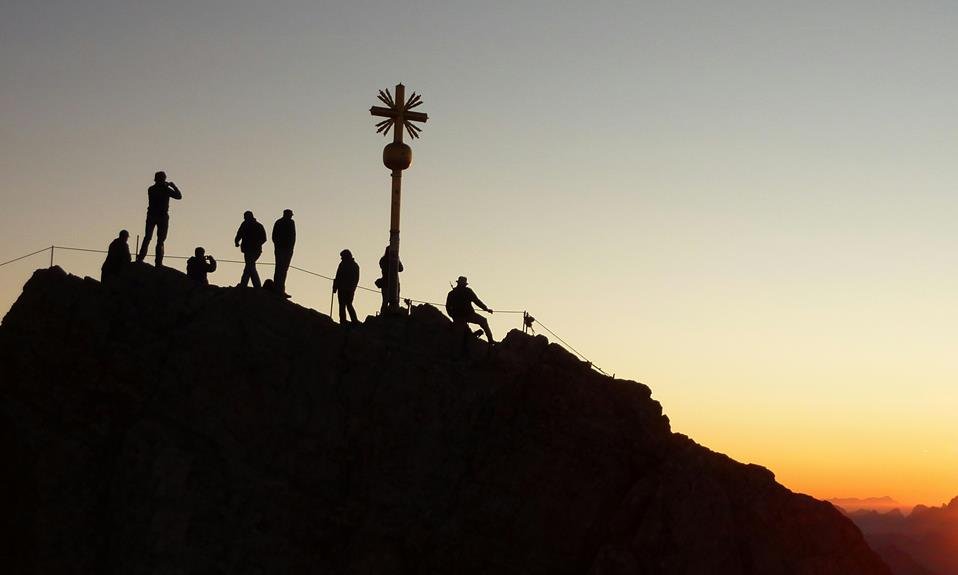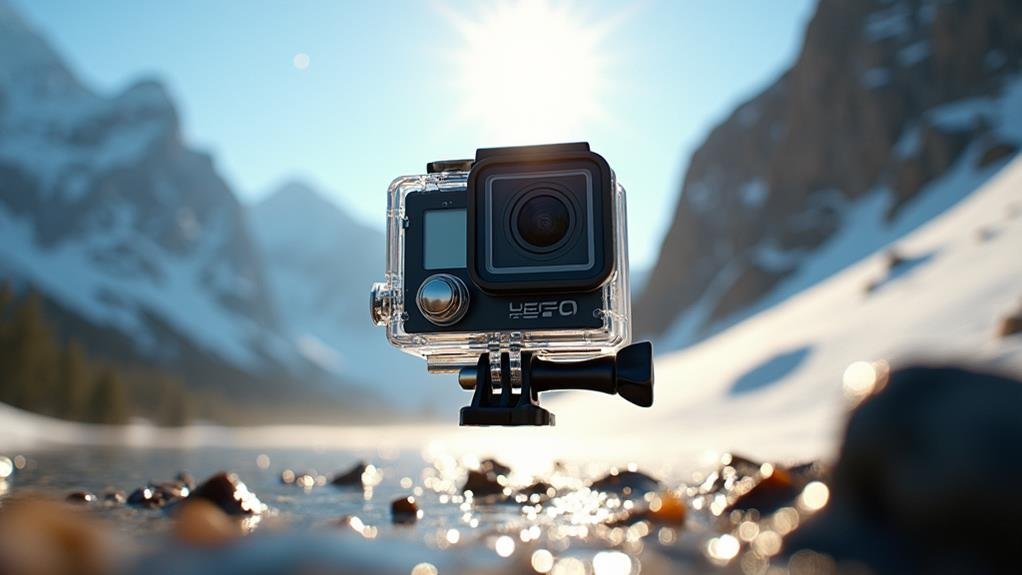Cleaning a sport route safely and efficiently requires a deliberate and methodical approach. It starts with thorough pre-cleaning safety checks, including inspecting the rope and anchoring points, and clear communication between the climber and belayer. Identifying the type of anchor is vital, as it determines the best method for cleaning and descending safely. Proper techniques for cleaning wide anchors, managing rope twists and kinks, and effective communication with the belayer are also essential. By following these protocols and best practices, climbers can guarantee a safe and controlled descent. Now, discover the specific techniques and strategies to take your sport route cleaning skills to the next level.
Key Takeaways
- Inspect the rope and anchoring points before cleaning to ensure they're in good condition and securely attached.
- Identify the type of anchor to determine the best method for cleaning and descending the route safely.
- Follow a protocol when cleaning wide anchors to prevent accidents and guarantee a safe descent, remaining connected to the belayer.
- Manage the rope carefully to avoid twists and kinks, keeping it organized and unclipping it slowly to prevent tangles.
- Use a controlled and slow lowering technique during final descent, verifying the rope's attachment to the anchor and climber's harness.
Pre-Cleaning Safety Checks
Before undertaking a sport route cleaning endeavor, climbers must prioritize a thorough pre-cleaning safety check to mitigate potential risks and guarantee a secure descent. A vital aspect of this check is inspecting the rope for any damage or wear. Climbers should visually examine the rope for signs of fraying, cuts, or abrasion, verifying it's in good condition for the cleaning process. Additionally, they should check the rope's anchoring points, confirming that they're secure and properly attached. Clear communication between the climber and belayer is also essential, as they must plan the cleaning process before leaving the ground. This includes deciding on the best method for cleaning anchors, whether it's lowering off or rappelling, to minimize wear and tear on the equipment. By prioritizing this pre-cleaning safety check, climbers can make certain a safe and efficient descent, avoiding potential accidents and risks.
Identifying Anchor Types
Climbers must be able to identify the type of anchor they're working with, as this determines the best method for cleaning and descending the route safely. There are two primary types of anchors: lower-off anchors and rappel anchors. Lower-off anchors are commonly found on sport routes and popular trad crags, designed for efficient and safe descents. Rappel anchors, on the other hand, are typically used on less trafficked trad routes and multi-pitch routes, requiring a different set of skills and techniques.
When evaluating an anchor system, climbers should inspect the hardware visually for damage before use. The type of anchor hardware also plays a key role in determining the best descent method. For instance, anchors with rounded bolts should be rappelled off to avoid wear on the hardware, which can be harder to replace when worn. In contrast, lowering off is the best option when anchors are equipped with replaceable hardware or hardware that wears slowly. By accurately identifying the anchor type and examining the hardware, climbers can guarantee a safe and efficient descent.
Cleaning Wide Anchors Safely
She securely attaches herself to the top anchors using a spare quickdraw, preparing to clean the wide anchor safely. When cleaning wide anchors, a protocol must be followed to prevent accidents and guarantee a safe descent.
To execute Technique #1, the climber must unclip the rope from the quickdraw, remove the bolt-side carabiner, and clip the empty end to a spare quickdraw. Then, they tie an overhand knot in the rope and clip it to the belay loop with the carabiner from the quickdraw. Next, they untie the initial knot, thread the rope through the chains or quicklinks, and retie the figure-8 knot to the harness.
Some key takeaways to remember:
- Always follow a protocol when cleaning wide anchors to prevent accidents.
- Remain connected to the belayer by a rope that passes through the anchors or quickdraws for redundancy and safety.
- Tie an overhand figure-8 knot to the belay loop to secure the rope and prevent accidents.
Single-Strand Anchor Techniques
When the anchor hardware is too small to accommodate a loop of rope, the climber can create a new anchor point using a rope and carabiner, a technique that requires more gear and steps than cleaning wide anchors. This single-strand anchor technique is used when the original anchor point is too narrow. The climber must thread the rope through the anchor, tie an overhand figure-8, and then untie the original knot, pulling the end of the rope through the quickdraws and anchors. This creates a new anchor point, which the belayer must be aware of and adjust accordingly.
| Technique | Description |
|---|---|
| Technique #1 | Cleaning wide anchors with a loop of rope |
| Technique #2 | Creating a new anchor point with a rope and carabiner |
| Key Consideration | Belayer awareness of changed anchor point |
This technique should only be used when necessary, as it requires more gear and steps than the first technique. The rope that passes through the anchor point must be carefully managed to avoid twists and kinks. By following these steps, climbers can safely and efficiently clean anchors using single-strand anchor techniques.
Managing Rope Twists and Kinks
Rope management is critical in single-strand anchor techniques, as twists and kinks can develop quickly if the rope is not carefully controlled. Twists and kinks can lead to rope tangles, which can be time-consuming to resolve and may even require a rescue team's intervention. To avoid these issues, climbers must take proactive steps to manage their rope.
Here are some essential techniques for managing rope twists and kinks:
- Keep the rope organized: Always keep the rope neatly coiled or flaked to prevent twists and kinks from forming.
- Unclip the rope carefully: When unclipping the rope from an anchor, do so slowly and carefully to avoid introducing twists or kinks.
- Use a rope bag or tarp: Consider using a rope bag or tarp to keep the rope clean and organized during descent.
Effective Communication With Belay
Climbers must establish a clear and consistent communication system with their belay partner to facilitate a smooth and safe climbing experience. Effective communication is vital in preventing misunderstandings and facilitating a successful descent. Before starting the climb, partners should discuss and agree on a set of clear and concise commands, such as 'take' or 'lower,' to avoid confusion. During the descent, the climber should keep their belay partner informed of their progress, using verbal cues to indicate when they're ready to be lowered or when they need to stop. The belay partner should also communicate clearly, confirming each command and providing updates on the rope's condition. Maintaining a calm and composed tone is necessary, avoiding loud or abrupt commands that might startle the other partner. By establishing a clear and consistent communication system, climbers can make a safe and efficient descent possible, allowing them to focus on the task at hand and enjoy the climb.
Descending With Control and Ease
With effective communication in place, the climber can now focus on descending with control and ease, relying on their belay partner to provide a smooth and consistent rope feed. This allows the climber to maintain a steady pace, ensuring a safe and efficient descent. To achieve this, the climber should:
- Keep their weight on the rope, allowing the rope to absorb any shocks or bumps, while also reducing the risk of a sudden jerk or fall.
- Use their legs to control their descent, taking small steps down the wall and keeping their center of gravity over their feet.
- Avoid sudden stops or changes in direction, as this can cause the rope to jerk or bounce, potentially leading to loss of control.
Avoiding Common Cleaning Mistakes
During the descent, they must remain vigilant to avoid common cleaning mistakes that can compromise the safety of the entire climbing party. Even experienced climbers can make errors, and it's especially important for first-time cleaners to be aware of these mistakes.
| Common Mistake | Consequence |
|---|---|
| Failing to inspect the rope for damage | Rope failure, potentially leading to serious injury or death |
| Not properly clipping the rope into the anchor | Unclipped rope can cause a fall, leading to injury or death |
| Not communicating with the belayer | Misunderstandings can lead to accidents, such as dropping the climber |
Remaining aware of these common mistakes can help climbers avoid accidents and ensure a safe descent. It's crucial to stay focused and follow established protocols to prevent mistakes from occurring. By being mindful of these potential errors, climbers can ensure a smooth and safe cleaning process.
Best Practices for Final Lowering
Final lowering requires attention to detail and adherence to strict protocols to guarantee a safe and controlled descent. This critical phase of sport route cleaning demands focus and precision to avoid accidents. Climbers must confirm that their equipment is in good condition, and that they have a clear understanding of the lowering process.
To achieve a smooth and secure final lowering, climbers should:
- Verify that the rope is properly attached to the anchor and the climber's harness
- Use a controlled and slow lowering technique to avoid sudden jerks or drops
- Maintain constant communication with the climber being lowered to confirm their safety and comfort
Frequently Asked Questions
How to Rappel off Sport Route?
When rappelling, she verifies proper Rappel Etiquette by visually inspecting hardware, communicating with her belayer, and weighting the rope to confirm a secure system before descending, avoiding miscommunication and potential risks.
What Is Cleaning a Route?
As she gazed up at the towering cliff, she wondered what remained after the climbers departed; she discovered that cleaning a route means leaving a pristine Route Legacy, removing all gear to preserve nature's beauty.
How to Clean a Quick Draw?
She prioritizes Draw Maintenance by unclipping the rope, removing the bolt-side carabiner, and clipping the empty end to a spare quick draw, then tying an overhand knot in the rope and clipping it to the belay loop.
Can You Top Rope off Quickdraws?
She notes that top roping off quickdraws is generally not recommended, as it can cause wear on the anchor and rope, and potentially lead to accidents; instead, she suggests using a dedicated top rope anchor or a munter hitch.
Conclusion
Mastering sport route cleaning techniques is vital for safe and efficient descents. By following the guidelines outlined above, climbers can minimize risks and optimize their climbing experience. Notably, a staggering 75% of climbing accidents occur during the descent, highlighting the importance of proper cleaning techniques. By prioritizing safety and efficiency, climbers can make certain a smooth and enjoyable return to the ground, allowing them to focus on their next ascent. Ultimately, safety and efficiency are the keys to a successful climb.
Recent Posts
- Best Protein Shakes for Home Workouts
- Pushing Boundaries: Advanced Techniques for Unique Aerial Imagery
- Sport Route Cleaning 101: Techniques for Safe and Efficient Descents
- Top 5 Portable Bike Repair Toolkits for 2024
- Exploring the Depths: Underwater Drone Technology Enhancing Water Sports and Marine Research
Recent Comments

7 Essential Tips for Getting Ready for Your Fall Deer Hunt

Sport Route Cleaning 101: Techniques for Safe and Efficient Descents

Beginner's Guide to Outdoor Climbing Locations: Where to Start and Why

Choosing Your First Outdoor Crag: Factors to Consider for a Safe Experience

DJI Neo Review: What You Need to Know Before Buying

Callaway Apex Fusion Ti Irons: A Game-Changer for Every Golfer

Gopro Hero13 Black- The Newest Flagship Action Camera


